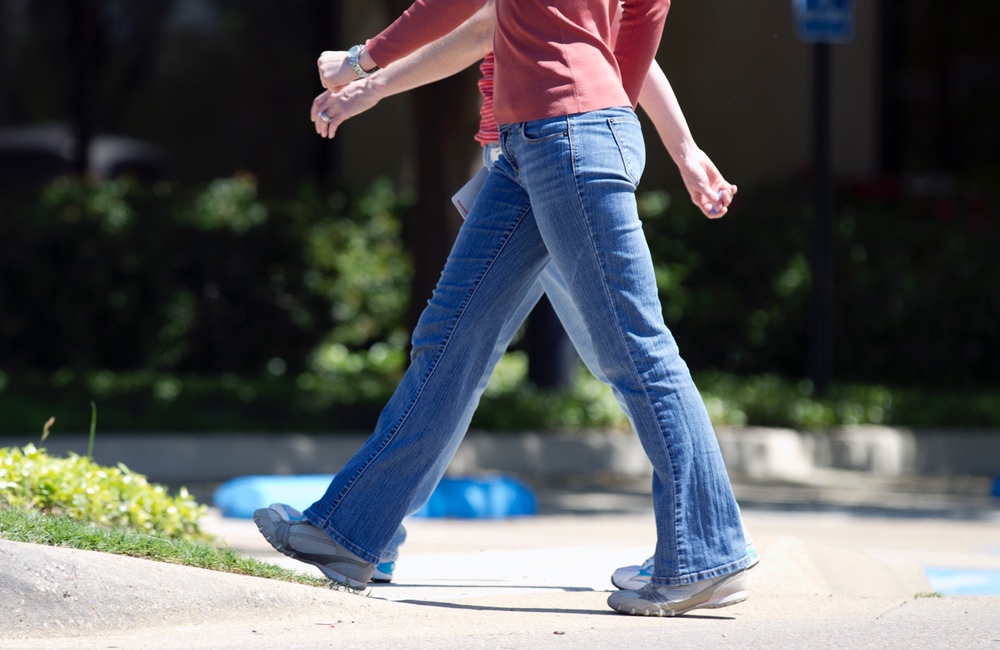Osteoporosis is one of the most common disorders in the U.S. While women are particularly susceptible to developing osteoporosis, men should not consider themselves immune to it. One in two women and one in four men above the age of 50 will have an osteoporosis-related fracture in their lifetime. In the U.S., a woman’s risk of hip fracture is equal to her combined risk of breast, uterine and ovarian cancers.
Sadly, a great many people are only diagnosed with either advanced osteoporosis or after they actually have had a fracture, when the opportunity for primary prevention has passed.
While osteoporosis is in theory simply a disorder of the bones, it can have many other effects: People with bone fractures due to osteoporosis often experience pain, dependence, and depression. Only about 40% of those who have hip fractures are able to return to their previous levels of activity in their daily lives.
The vast majority of fractures that require hospitalization for people over 60 are due to osteoporosis and there is, unfortunately, an increased mortality rate for people with hip fractures from osteoporosis.
Something as seemingly innocent as a sneeze can actually cause a bone to break in particularly advanced cases.
Patients and sometimes, their doctors, are not as aware as they should be of current osteoporosis prevention and treatment guidelines. In some areas clinicians do not have access to the best diagnostic tests, like bone mineral density (BMD) tests, and this can also negatively affect a patient's outcome.
This article outlines the factors that contribute to osteoporosis, how osteoporosis is diagnosed, how to go about treating it once you are diagnosed, and preventing it if you are at risk (which many of us are). Since there is a lot we can do to reduce our risk of fractures occurring in the future, we will also discuss the lifestyle changes and medications that can help reduce risk of developing the disorder down the road.
Osteoporosis occurs when the bone tissue "thins" over time. This can happen because new bone is not produced adequately, or because bone tissue is reabsorbed, or broken down, more quickly than it is replaced. According to the NIH, people produce more bone than they lose until about age 30 — at this point, the situation reverses, and more bone is lost than is produced. In women, menopause can trigger changes in the bones that cause accelerated bone loss.
Working with your doctor, you can determine how likely it is that you will develop osteoporosis during your lifetime. There are lifestyle changes that all people can make to reduce their odds (more on this below). But there are other risk factors that are considered "non-modifiable," meaning that there’s not much we can do about them.
- Family history
- Certain medications that interfere with bone formation, speed up bone resorption, or prevent the adequate absorption of nutrients essential for bone health. These are modifiable if they are being currently taken and can be substituted by other medications that are not bone-wasting. But if theyhave been taken in the past, they are not modifiable.
- Inadequate nutrition and calcium/vitamin D intake during childhood
- Personal history of fracture as an adult
- Older age
- Early menopause (before 45 years old)
- Late menarche, or first period (after 16 years old)
- Thin body frame and tall height
- History of amenorrhea or irregular menstrual periods
- Being female
- Being of white/Caucasian (and perhaps Asian) ancestry
- Have had periods of long bed rest
Age, body weight, and the number of years a woman has menstruated are among the more important non-modifiable risk factors for osteoporosis. Menopause increases a woman’s risk for developing osteoporosis considerably.
There are also a number of past or present medical conditions that can predispose individuals to bone loss. These include rheumatoid arthritis, vitamin D nutritional deficiency, hyperparathyroidism, diabetes mellitus, estrogen deficiency, hypogonadism (men), malignancy (general), multiple myeloma, CKD/renal osteodystrophy, eating disorders (anorexia, bulimia), depression, alcoholism, Paget's disease, congestive heart failure, emphysema, seizure disorder, post-transplant bone disease, leukemia, and lymphoma.
- Low body weight
- Low calorie intake or calcium/vitamin D deficient diet at present
- Having a sedentary lifestyle or inadequate physical activity
- Heavy alcohol use (three or more drinks/day)
- High salt intake
- Tobacco cigarette smoking (active or passive)
- High caffeine intake
Certain medications can also increase one’s odds for bone loss, and therefore osteoporosis, especially in the elderly. A list of the medications that have strong evidence for increasing bone loss is shown below. Keep in mind though that the evidence for some of these drugs' bone effects is not firmly established — they are to be viewed as perhaps raising your risk. Don't change your medication without talking to your doctor and reviewing the medications you are taking and why.
| Steroids (e.g., prednisone) |
| Lithium |
| Tamoxifen (premenopausal) |
| Antacids (chronic use) |
| Vitamin A, excessive intake |
| Prolonged Anticoagulation (heparin) |
| Methotrexate for treatment of rheumatologic conditions, or as part of cancer chemotherapy |
| Gonadotropin-releasing hormone (agonist or antagonist) for prostate cancer[what for?] |
| Antidepressants |
| Excessive thyroid supplementation |
| Anticonvulsants such as dilantin, for epilepsy |
| Phenothiazines for use as tranquilizers or for schizophrenia |
| Aluminum-containing medications such as certain antacids |
| Cytotoxic drugs (chemotherapy) |
| Immunosuppressive therapy for HIV disease or after organ transplant |
| Proton-pump inhibitors for heartburn |
| Aromatase inhibitors for breast cancer |
| Cyclosporin A and Tacrolimus for immunosupression |
| Thiazolidinediones for diabetes |
| Depo-medroxprogesterone for birth control |
Osteoporosis and fractures are less common in men for a number of reasons. Men have a larger skeleton size. Their bone loss also tends to start later in life than women’s and it progresses more slowly. Finally, men obviously don’t go through menopause, so they don't experience the rapid bone loss that women do during this time.
Men suffer one-fifth to one-third of all hip fractures, and about half as many vertebral fractures compared to women; on the other hand, men have much higher mortality and chronic disability rates after a hip fracture, but the reason for this is not clear. They are also more likely to have secondary causes of bone loss compared to women.
Everyone who is at high risk for osteoporosis based on the factors discussed above should visit their doctor for a workup. This will usually involve a complete skeletal history (including a discussion of past fractures that may have occurred), a risk factor assessment, physical exam laboratory tests to rule out other causes of bone loss, and a measurement of bone mineral density (BMD).
Men suffer one-fifth to one-third of all hip fractures, and about half as many vertebral fractures compared to women; on the other hand, men have much higher mortality and chronic disability rates after a hip fracture.
In this physical exam one’s doctor will generally look for secondary causes of bone loss and hormone disorders, and he or she will determine one's risk of falling, based on certain physical tests, such as how much difficulty a person has getting up from a chair without using his or her arms. Blood tests are mainly used to rule out other conditions that may contribute to altered bone turnover.
According to the guidelines published by the National Osteoporosis Foundation (NOF), you should have BMD screening if you:
- are above age 65,
- have a history of fractures
- have a history of estrogen-deficiency (women)
- hypogonadism (men)
- have used corticosteroids for long periods
- have an endocrine (hormone) disorder
- have significant other risk factors regardless of one’s age.
It’s important to realize that DXA and similar radiographic techniques only provide information about BMD, and help doctors estimate one’s general risk level. Other techniques, like MRI-based bone imaging, hold future promise for more detailed assessments.
Treatment of osteoporosis and the fractures associated with it requires a multi-pronged approach. Working with your doctor, you can begin to change your modifiable risk factors, like smoking, poor nutrition, and sedentary lifestyle. Your doctor can also help you manage secondary health problems that contribute to bone loss, reduce or eliminate medications that impair bone health, and improve your fall and injury risk. It may also be necessary to discuss with your doctor treatments that involve osteoporosis medication. Here are some of the treatments that have shown to have the best promise in both the treatment and prevention of osteoporosis.
Calcium is also extremely important to the health of our bones, though it needs vitamin D to be absorbed (this is why milk is fortified with vitamin D in the U.S.). Calcium supplements by themselves slightly lower the risk of certain types of fractures (vertebral, but not non-vertebral), but it does not lower fracture risk in patients with previous fractures. Supplemental vitamin D appears to reduce fracture risk when taken in doses sufficient to keep blood levels above a certain level (about 32.5 mg/ml) Talk to your doctor about whether it is a good idea for you to take calcium and/or vitamin D supplements. Dietary protein is another important factor for bone health. Studies have found that the more protein one eats, the less bone one loses with age, which is thought to be related to adequate calcium and vitamin D intake.
Adequate protein intake is associated with a better prognosis after hip fractures. Therefore, making sure you get enough complete protein, or supplement if necessary (to be determined by your doctor), can be a positive lifestyle change to improve your bone health.
There is some concern that excessive intake of sodium, caffeine, phosphorus and sugar may cause people to lose too much calcium in the urine, and change the way calcium is used by the body, which can contribute to bone loss. Although urinary calcium losses are usually followed by reduced renal calcium clearance, this may not be efficiently accomplished in the elderly. Further, the beverage sources for caffeine, phosphorus and sugar, often found in sodas, usually qualify as being of low nutrient density (LND) and, as such, their consumption should be avoided. Better is to substitute more calcium- and protein-rich drinks.
While it’s been in the news recently, the risk between bisphosphonate use and atypical (rare) fractures of the femur is fairly minimal. The incidence of such fractures appears to be very low in comparison with the number of fractures that the medications prevent from occurring. There is evidence that prolonged use of bisphosphonates makes the risk of atypical femoral fracture more likely to occur.
Bisphosphonates are generally thought to be an effective way to treat osteoporosis. The most common side effects of bisphosphinates are GI issues (heartburn, abdominal pain, and diarrhea). Bone, joint or muscle pain, eye inflammation (blurred vision or pain), and fever of flu-like symptoms are less common. . Gastrointestinal upset is probably the most common complaint with use of oral bisphosphonates, but following the proper instructions and increasing the time between doses can lessen this. As always, talk to your doctor about all risks and benefits associated with a medication you’ve been prescribed.
Some people should not take PTH, such as those with higher risk of certain bone cancers, history of Paget’s disease, radiation, hyperparathyroidism, or certain other conditions. Treatment with teriparatide must always be limited to two-years because of concerns over the possibility of a bone cancer called osteosarcoma.
Physical activity and exercise at virtually any age can increase BMD and reduce fracture risk, so it is never too lat to start exercising. Talk with your doctor to make sure that adding any kind of physical activity to your routine is safe.
Prolonged bed rest has the opposite effect: bone can atrophy by as much as 1-2% per week, which can increase one’s risk for fracture considerably. For this reason, if one has sustained an osteoporosis-related fracture, bed rest and reduced activity are generally kept to a minimum. People confined to bed for a prolonged period for other reasons should be aware that they may have lost bone mass during their recovery. For them and people who are recovering from an osteoporosis-related fracture, physical therapy usually includes weight-bearing and resistance exercises, back-strengthening and postural training, balance training (or Tai Chi), and stretching for tight soft tissues and joints. Strenuous or sudden twisting, turning or flexing, especially when lifting or carrying an object, should be avoided.
As always, prevention is the best medicine. Taking steps to reduce your risk for osteoporosis before it begins is a major weapon in the fight against it. If you are at risk for osteoporosis, and especially if you have multiple risk factors for it, talking to your doctor about the best ways to protect against it is essential. He or she can help you devise a strategy to track and improve your BMD and reduce your risk of fracture in the future.
Similarly, if you’ve been diagnosed with osteoporosis, there are many steps to take to prevent a fracture from occurring by strengthening and rebuilding your bones. The initial work-up may include referral to an osteoporosis specialist, including an endocrinologist, rheumatologist, geriatrician, or other specialist with training in bone disorders.
Strategies for prevention and treatment usually include pharmacologic (drug) therapies, increasing calcium and vitamin D intake, treatment of any secondary medical causes of bone loss, approaches to reduce modifiable risk factors (like smoking, poor nutrition, and sedentary lifestyle), and an exercise plan that includes activities for strength, balance, and mobility. Your doctor will help you arrive at the right combination of weight-bearing and other exercises to fit your specific needs.
Osteoporosis is generally monitored by regular measurements of BMD, along with other methods that your doctor may use to track your progress. It is important to work closely with your doctor and keep him or her apprised of your progress, condition, and concerns so that you’ll have the best possible prognosis.




